Long Khanh scarf weaving village (Long Khanh A commune, Hong Ngu district, Dong Thap) is located on an island in the middle of Tien River, about 5km from the border with Cambodia. After more than 100 years of ups and downs, the village now has 147 looms in operation, producing more than 2 million scarves for the market each year.
Hundred-year-old shawl weaving village on an island in the middle of Tien River (Performed by: Nguyen Cuong).
10 years old already became a weaver
The unique thing about this craft village is that wherever you go, you can see men and boys sitting at their looms. Weaving in other places is "passed down from mother to son", but men in Long Khanh over 10 years old already know how to weave and love to weave.
During the summer, Huynh Lut Nam (14 years old) takes charge of two looms at the same time to replace his grandmother. Although he is still quite young, Nam is already a skilled worker, his hands are always nimble in connecting threads, changing spindles, and accurately adjusting each shuttle stroke.
While working, his eyes constantly looked back and forth to watch the two weaving machines, something that new workers could never do. "I saw my grandmother doing it since I was little, so I got used to it and found it easy. During summer vacations or days off from school, I always liked to stay home and watch the loom for my grandmother," Nam said.
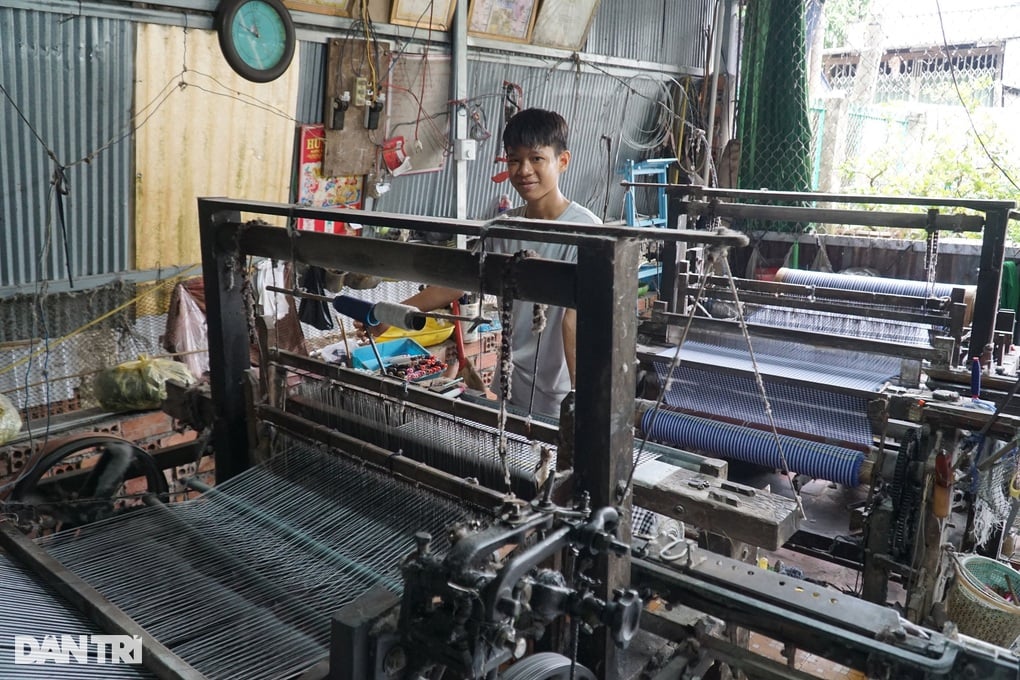
At 14 years old, Nam is already a skilled "weaver" (Photo: Nguyen Cuong).
Mrs. Nguyen Thi Men (60 years old, Nam's grandmother) shared that most of the boys and girls in the village can stand at the loom after the age of 10. In the past, the village woven by hand, which was more difficult and laborious, but now they weave by machine, so the workers are required to be quick-handed and quick-eyed.
"The boy's mother (Nam) doesn't like weaving, but he really likes it, so I taught him the craft. This job provides regular work, and two looms earn enough money to support the whole family," Ms. Men shared.
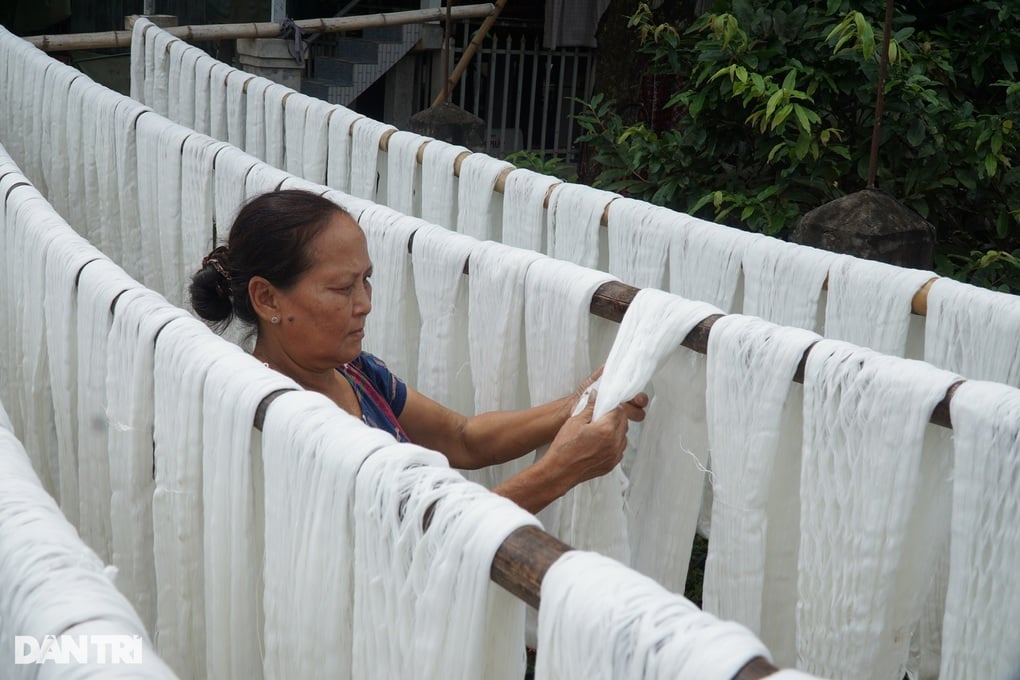
Drying thread, one of the steps in weaving a scarf (Photo: Nguyen Cuong).
Mr. Tam Nat, 62 years old, claims to have over 50 years of experience weaving scarves. In addition to weaving scarves for sale, Mr. Tam is also a performing weaver for tourists. Many visitors want to weave their own scarves to take home, so Mr. Tam teaches them how to weave, thereby earning extra income.
"I was already at the loom when I was twelve years old. Before, when weaving by hand, I could weave on one loom, but now when weaving by machine, I can weave on two looms at the same time. In the past, weaving was only a job during the flood season. In recent years, there have been many tourists coming, so the economy has improved," said Mr. Tam.
Mr. Duong Van Luc (55 years old) is one of the two rare thread spinners in the village, supplying thread for about 70 weaving machines. Mr. Luc does not remember when he learned to spin thread, "the profession was passed down from his parents, he has been doing it since he was young".
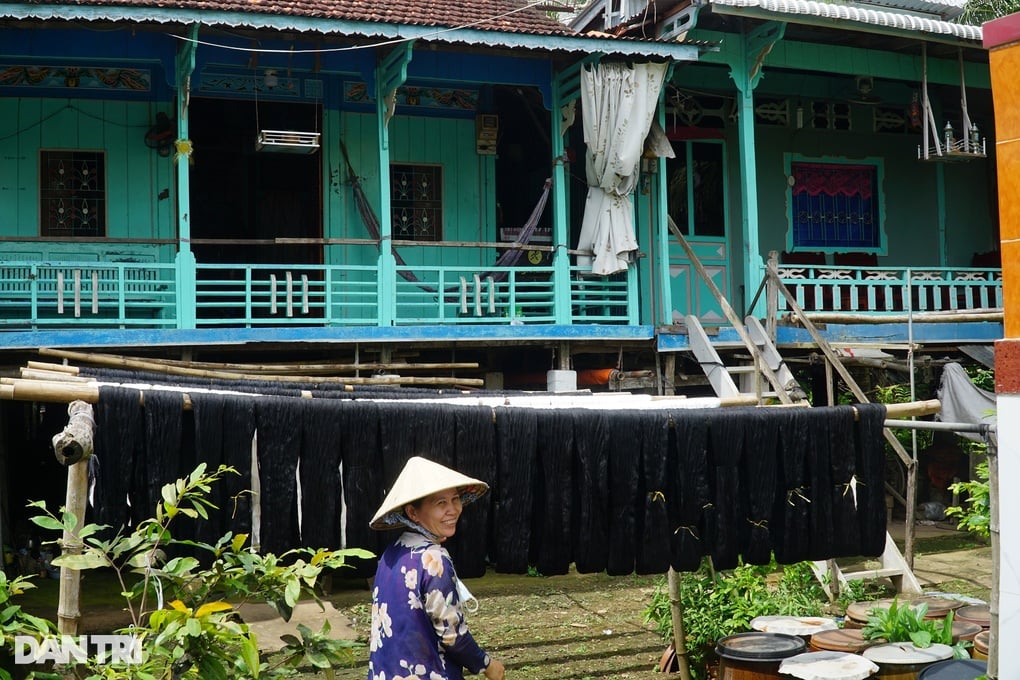
A woman drying thread in front of a stilt house, along with a checkered scarf, is also a unique feature of Long Khanh Islet (Photo: Nguyen Cuong).
Ms. Pham Thi Niem (55 years old) is from another place, but since marrying Mr. Luc, she has followed her husband to work as a spinner until now. "I love this job so much, I can't quit. There's a lot of work, I only rest on the 30th of Tet," Ms. Niem said.
Young people return to traditional professions
According to the elders in the village, more than a hundred years ago, there were very few fields on the alluvial plains, and during the flood season, people had no jobs. To make a living, many people learned the Cham weaving trade and then returned to teach it to the villagers.
In the 2000s, weaving machines gradually replaced traditional looms, increasing productivity by three times, and learning weaving became much faster and easier. The roads became more convenient, more tourists came, and since then, the villagers have gradually prospered.
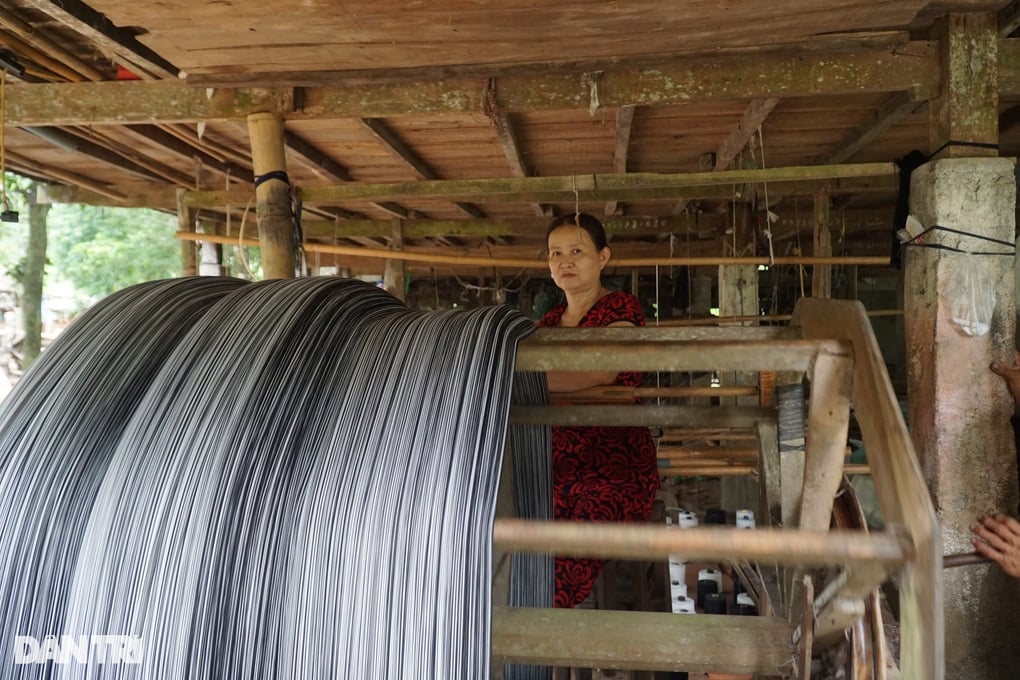
Weaving is a process that workers still have to do completely manually (Photo: Nguyen Cuong).
To make a scarf, the thread needs to go through the stages of rinsing, dyeing, sizing, looming and weaving. Traditional scarves are only black and white woven in a checkerboard pattern, but now they are mixed in many colors and have added patterns according to taste.
The scarf is rectangular, 120 cm long, 40 to 50 cm wide. The scarf can be used as a neckerchief, head wrap, sweat wiper, belt, food carrier when traveling, hammock for children... Above all, the checkered scarf has now become a symbol when talking about people from the Mekong Delta.
"To weave beautifully, a craftsman must study for about half a year. This job requires meticulousness. Even if it is done by machine, a skilled craftsman will make the scarf more beautiful," said Mr. Pham Van Choi (71 years old).
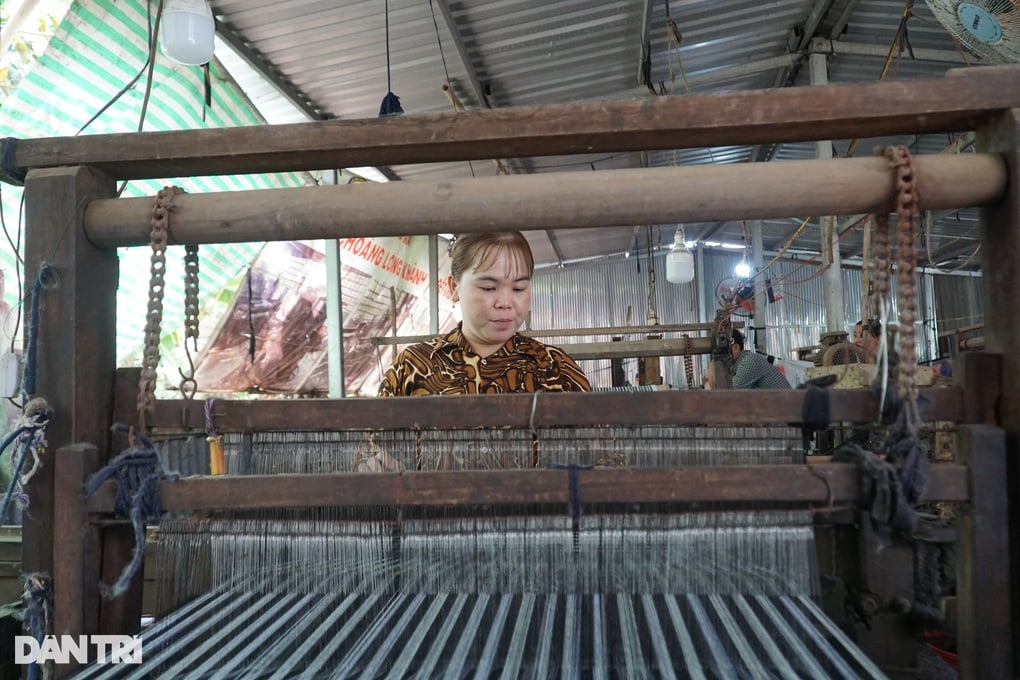
Weavers earn about 7 million VND per month (Photo: Nguyen Cuong).
Mr. Choi has 60 years of experience as a weaver. About 10 years ago, he handed over the family weaving workshop to his son, Mr. Pham Thanh An (37 years old).
Returning to the weaving profession for 10 years, Mr. An is now the most famous weaver in the village, and also the Director of Long Khanh Scarf Weaving Cooperative. He is both skilled at hand weaving and machine weaving, but his main job is to help find outlets for the village's more than 2 million scarves each year.
Mr. An shared that he had known how to weave since he was a child, but there was a time when he quit his job and went to work in Ho Chi Minh City. In the early 2010s, seeing that the village's textile products were having difficulty finding a market, he wanted to contribute to preserving the traditional craft, so he decided to bring his wife and children back to his hometown.
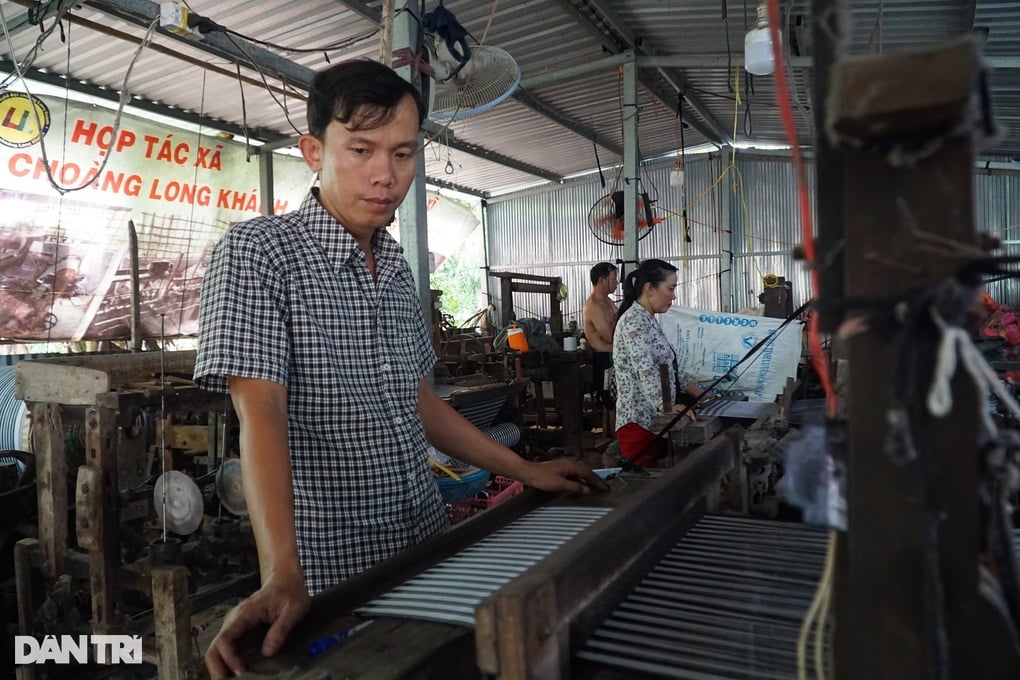
Mr. An in his weaving workshop (Photo: Nguyen Cuong).
"More than 10 years ago, the output was very difficult, the goods could not be sold so more than half of the weaving machines stopped. With the support of the government, we diversified our products, made more items such as handbags, shirts, hats from the scarf fabric, and then brought them to promote at all the fairs.
In the past 6 years, the products have been selling well all year round, mainly souvenirs. Tourism is developing, so the craft village is also developing strongly," said Mr. An.
According to Mr. An, each weaver, if he looks after two machines at the same time, can make more than a hundred scarves a day, earning over 7 million VND per month. Currently, there are more than 300 people in the village participating in the weaving process, bringing more than 2 million products to the market each year.
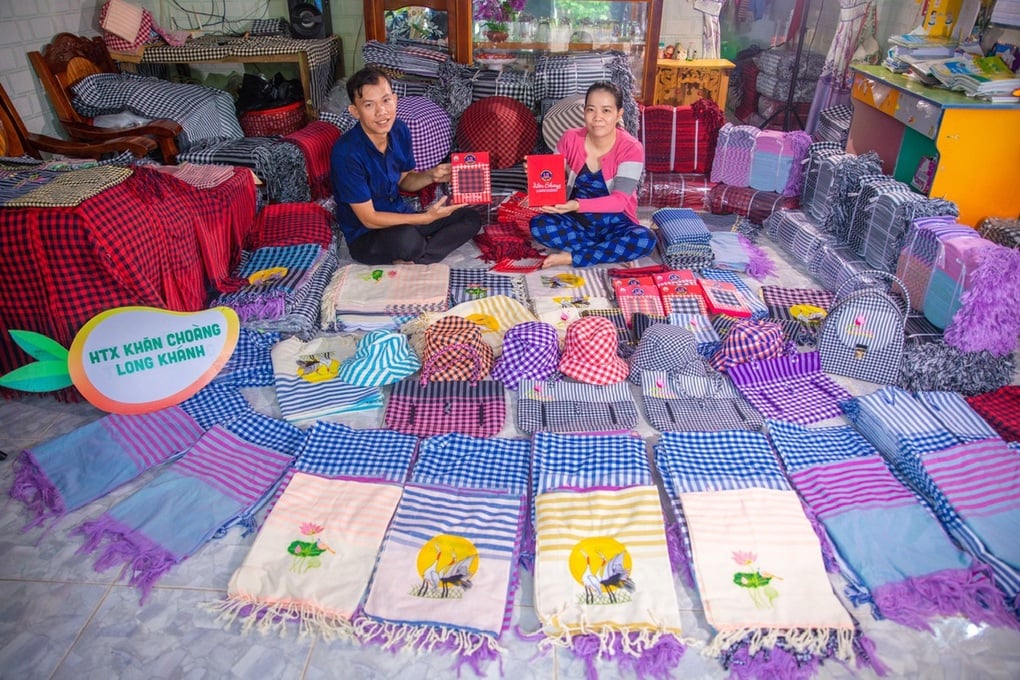
Checkered scarves are now more colorful to please tourists (Photo: Contributor).
Because their income is gradually improving and they are contributing to preserving their ancestors' craft, more and more young people are joining the weaving cooperative. Some are directly involved in production, some are in charge of improving designs, and some are in charge of finding outlets for the products.
With its unique traditional values, the weaving profession of Long Khanh A commune has become a National Intangible Cultural Heritage.
Source link







![[Photo] Prime Minister Pham Minh Chinh chairs conference on anti-smuggling, trade fraud, and counterfeit goods](https://vphoto.vietnam.vn/thumb/1200x675/vietnam/resource/IMAGE/2025/5/14/6cd67667e99e4248b7d4f587fd21e37c)





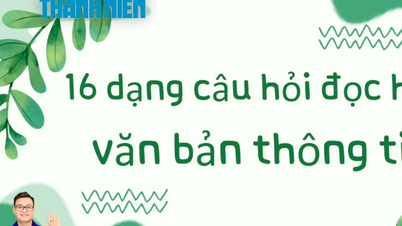

















































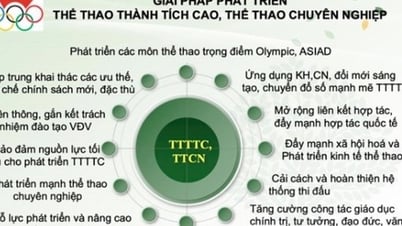























Comment (0)